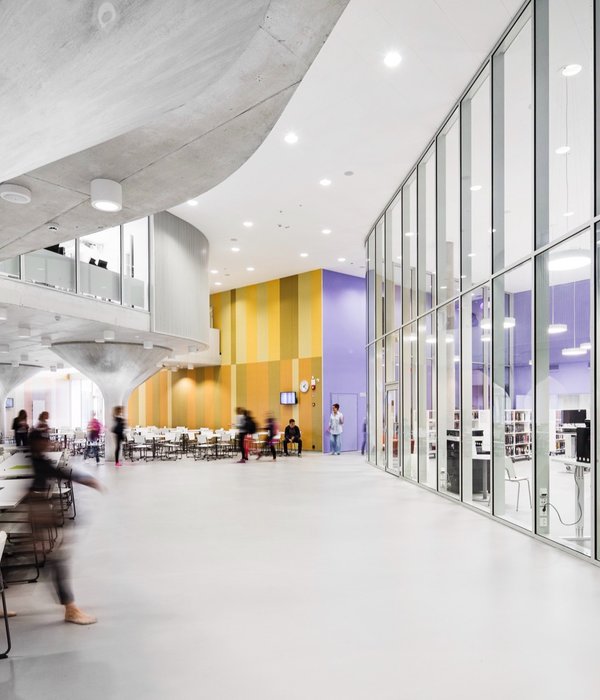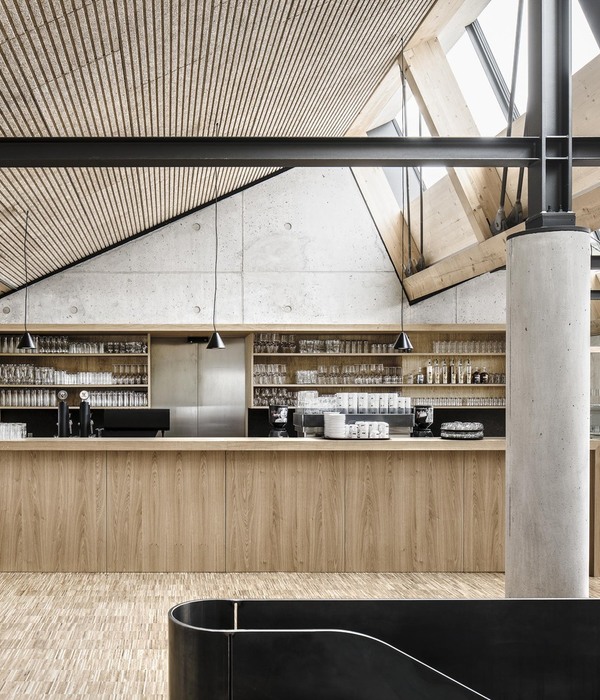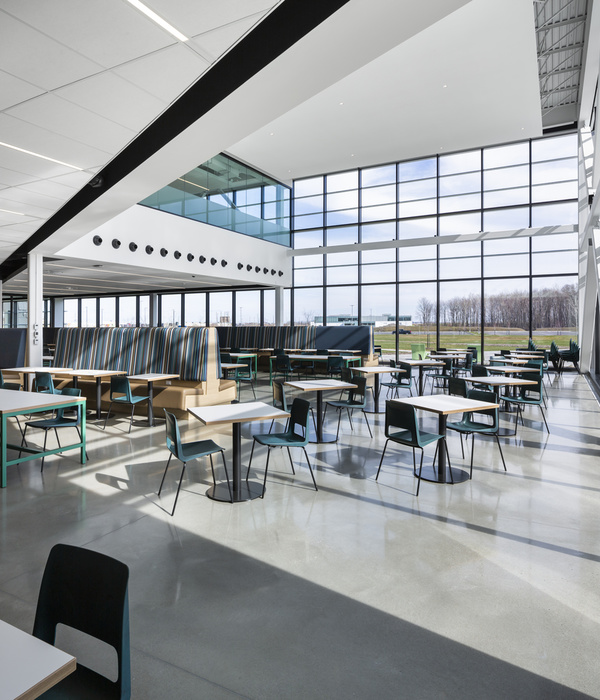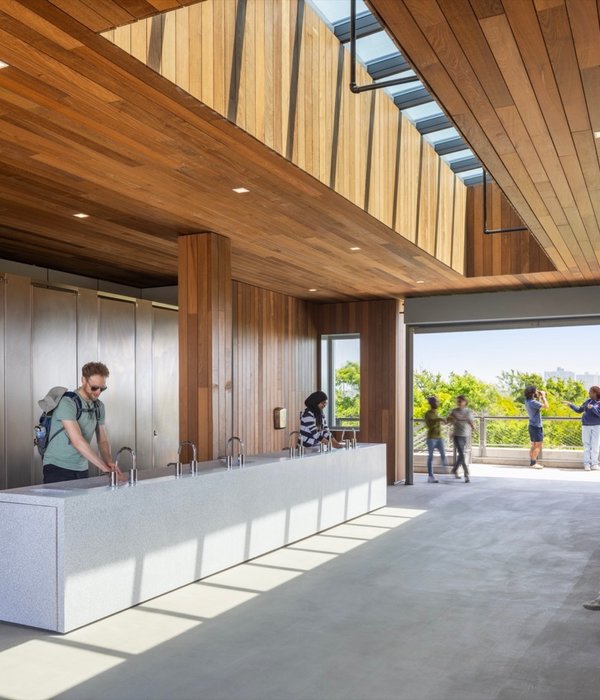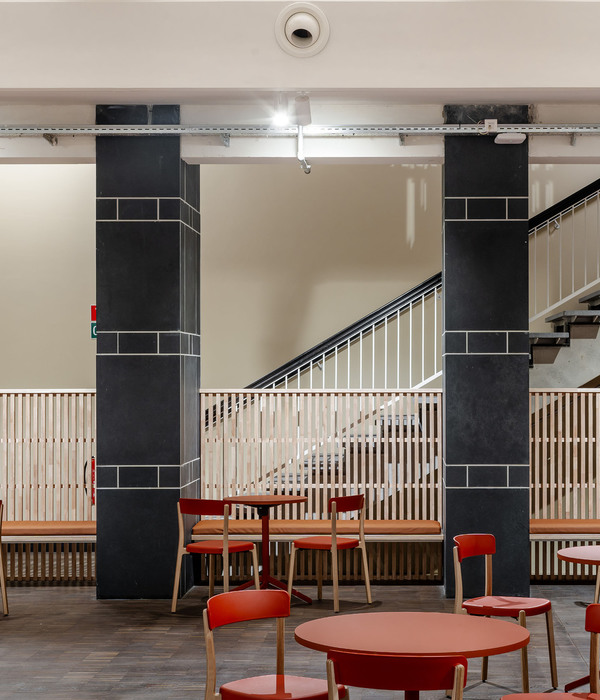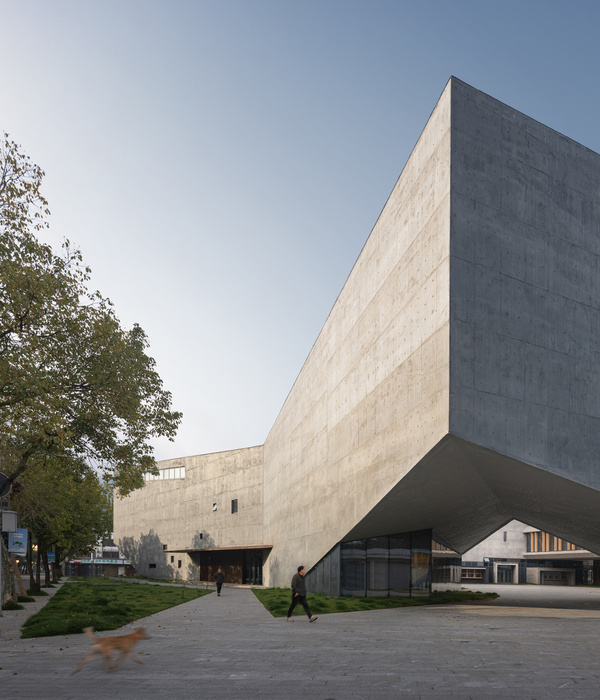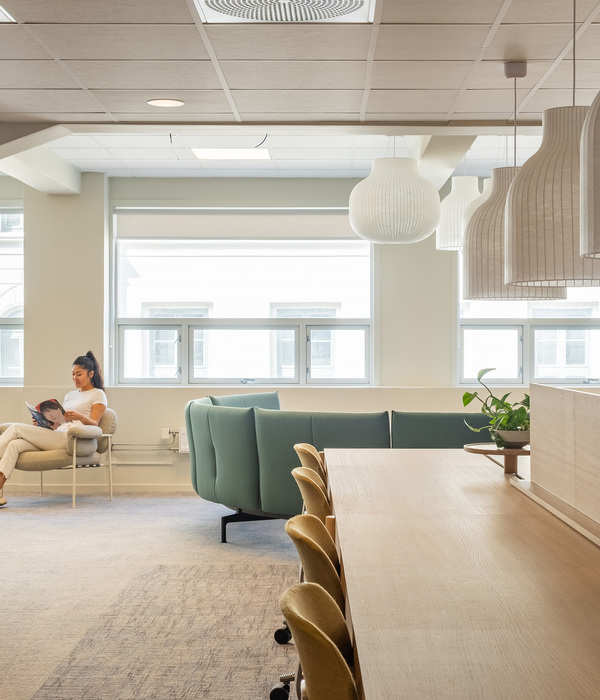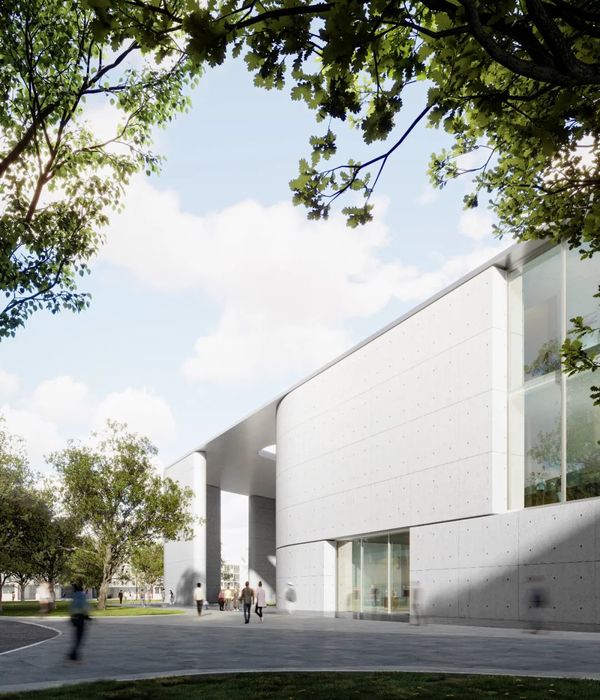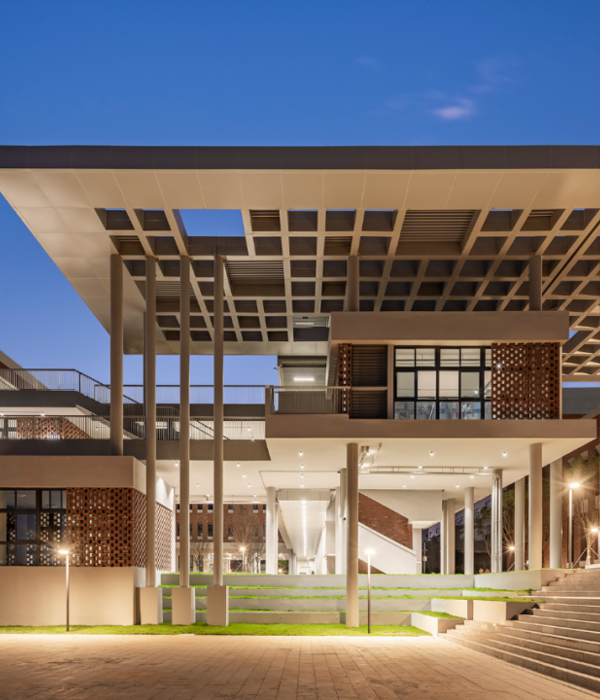嘉定区积谷仓公共卫生服务设施是Mur Mur Lab新完成的一个小房子。建筑一侧紧邻嘉定练祁河,原先作为水泵房使用,已经荒弃很久。完成后的建筑在将城市公共活动重新引入这个临水空间的同时,也让它成为了一个新的在地社区活动中心。
The Ji Gu Cang Public Health Service Facility of Jia Ding District is a newly completed small house by Mur Mur Lab. The building is close to Lian Qi River of Jia Ding, which has been abandoned for a long time and originally used as a water pump room. The finished building reintroduces the city’s public activities into the water front space and makes it a new center for local community activities.
▼项目概览,Preview © WDi
场地有两个令人印象深刻的记忆点,一是它周边的景观环境非常好,紧邻嘉定练祁河,嵌在沿河绿化带中:二是在一栋荒弃的水泵房和现有公厕之间,有一处很小的广场,当时铁门紧锁,用来堆堆杂物。
The site has two impressive memories: first, it has a very good surrounding landscape, close to the Lianqi River in Jiading, embedded in the green belt along the river; second, between an abandoned water pump house and the existing public toilets, there is a small square, with locked iron doors, used for piles of debris.
▼场地鸟瞰,Site aerial view © WDi
起初的设计范围里,并没有包括水泵房和小广场。是我们执意恳请业主,一定得把它们作为一个整体来考虑。虽然用作公厕,只要处理得当,这里仍有机会成为一处鲜活的社区公共场所。
“公厕+”简单的说,就是我们为这个场地特别提出的,“公厕+公共空间”的新模式。
The original design did not include a pump house or a small plaza. We were the ones who insisted that the owners consider them as a whole. Although used as a public toilet, it has the opportunity to become a living communal place, provided it is properly handled.
“Public toilet +” is simply a new model of “public toilet + public space” that we have specially proposed for this site.
▼项目鸟瞰,Project aerial view © WDi
要同时保证公厕的使用,和公共空间的品质,关键在合理的布局。我们调研了一些周边的城市公厕,按照不同区域的使用频率和对通风,视线的要求,将它们分成两组。一组包括管理间和男女厕,它们进出频繁,气味也大。另一组包括母婴室和第三人间,相对不常用但私密性要求可能更高。
To ensure the use of public toilets and the quality of public space at the same time, the key is reasonable layout. We surveyed some public toilets in the surrounding cities and divided them into two groups according to the frequency of use and requirements for ventilation and sight lines in different areas. One group includes the management room and the men’s and women’s toilets, which have frequent access and smell. The other group includes the mother-and-baby room and the third gender room, which are less common but may require more privacy.
▼一层平面图,Plan 1F © Mur Mur Lab
这两组功能被分别布置在广场两侧,并尽可能的向城市街道靠近,空出临河的活动场地。男女厕的出入口以一条无障碍坡道和街道直接相连,仅是如厕的居民不用进入小广场就可以方便的进出,也能减少气味和视线的相互干扰。
These two groups of functions are arranged on either side of the square, as close as possible to the city street, leaving the event space facing the river. The entrance and exit of the men’s and women’s toilets are directly connected with the street by a barrier-free ramp, so that only the residents who go to the toilet can enter and exit conveniently without entering the small square, and also reduce the mutual interference of smell and sight.
▼服务设施外观,Facilities exterior view © WDi
▼户外座位,Outdoor seating area © WDi
▼室外楼梯,Outdoor staircase © WDi
▼公厕,Toilet © WDi
被练祁河与植物环绕,原先荒弃的小广场变成了一个相对独立,尺度宜人,景色优美的公共活动场地。藏在它的最里端,有一部户外钢楼梯,通向屋顶上的敞厅。未来这里将作为一个微型的社区展厅,如实记录下真实的每日平常。
Surrounded by the Lianqi River and plants, the abandoned square has become a relatively independent, pleasant and beautiful public activity space. Tucked away at its innermost end, an outdoor steel staircase leads to an open room on the roof. In the future, it will serve as a miniature community exhibition hall, faithfully recording the real everyday life.
▼带顶篷的路径,The covered route © WDi
▼二层视角,View from the upper floor © WDi
▼二层社区小展厅,Community showroom © WDi
▼绿意从空隙进入室内,The greenery enters through the gap © WDi
这个公共建筑的设计过程,给了我们一个很好的切入点,观察一个经久的问题:建筑能否成为一个社会改良的工具?
对这个问题的思考,我们常常处于巨大的撕裂之中。在大学教育之前,我们应该和大多数人一样,从未想到盖个房子需要承载那么深沉的意义。在大学里,从零开始,我们接受趋同的观念,建筑学的社会价值似乎是与生俱来,理所当然的。但执业之后,每个人又迅速的被裹挟到真实的商业语境中。一度让我们有些迷茫。
This process of designing public buildings gives us a good starting point to observe a perennial question: can architecture be a tool for social improvement?
In thinking about this question, we are often in a giant tear. Before college, like most of us, it never occurred to us that building a house had such a deep meaning. In college, starting from scratch, we accept the idea of convergence, and the social value of architecture seems innate and taken for granted. But after practicing, everyone is quickly drawn into the real business context. We were a little confused for a while.
▼社区小广场视角 View from the community square © Hanzhi
建筑的社会价值是存在的吗?我们不如讨论另外一个问题:建筑对人的价值是存在的吗?答案显而易见。最重要的是,“人”在这里并不是一个抽象的指称,而是一个个丰盛的个体。一栋房子也只能为那些日日常见的身边人服务。建筑的社会价值,归根到底,还是它对每个使用者平等的价值。出来晒晒太阳的老人,和想拍张美美照片的女孩,他们有什么高下之分呢?从这个意义上看,建筑学在商业或是非商业的场景中,应体现的意义也是平等的。
Does the social value of architecture exist? Let’s talk about another question: does architecture have value for people? The answer is obvious. Most importantly, “man” here is not an abstract reference, but a rich individual. A house can only serve the people you see around you every day. The social value of architecture, in the long run, is its equal value to each user. What’s the difference between an old man out in the sun and a girl who wants to take a pretty picture? In this sense, architecture should embody equal meanings in commercial or non-commercial scenes.
▼从二层望向附近社区,View to the neighborhood from the second floor © Hanzhi
向内看,那里是一片丰盛的原野, 在那里,我们看到小房子的生长。
Look inward, and there is a rich wilderness, There, we saw the growth of little houses.
▼河边视野,View from the riverside © WDi
▼“生长”的小房子,A “growing” little house © WDi
▼模型,Model © Mur Mur Lab
▼一层平面图,Plan 1F © Mur Mur Lab
▼二层平面图,Plan 2F © Mur Mur Lab
▼剖面图,Section © Mur Mur Lab
▼项目更多图片
{{item.text_origin}}

